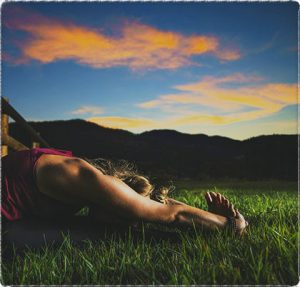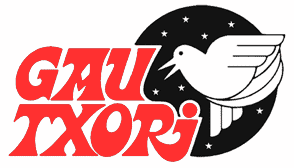FOR THE SAKE OF HEALTH.

In fact, stretching is one of the recommended routines that a pilgrim should practice on a daily basis as it keeps the muscles flexible, strong, and healthy. Without it, the muscles shorten and become tight. Then, when they are called on for activity, they are weak and unable to extend all the way. That increases the risk of joint pain, strains, and muscle damage.
How to avoid that?…Putting into practise some of the following key moves.
Feet/Legs
You have more than 100 ligaments in each foot. This strengthens them, which helps prevent collapsing of the arch and improves shock absorption during foot strike.
While sitting in a chair, scrunch a towel on the floor with your toes; try to use all five toes just as you would fingers. Repeat 10 times on each foot.
Sit on floor with your legs straight out in front and knees pointed toward the ceiling. Hinge forward from the hips with your back straight. Grab toes and pull toward your head, keeping feet flexed but legs straight, stretching foot, arches, and calves. Hold for 20 to 30 seconds. Repeat three times. (Tip: Can’t reach your toes with legs straight? Don’t bend your knees. Use a towel to pull on your feet while maintaining good form.)
Ankle
It improves mid-gait stability during supination and pronation, and strengthens lower leg muscles to prevent ankle sprains and overuse injuries to the foot.
Sit on the ground, with one leg straight ahead and other leg pulled in toward the groin. Loop resistance band around the middle of foot of the straight leg. Keep the band tensioned by pulling with both hands toward torso. With foot flexed, slowly rotate forefoot inward without allowing leg to rotate (keep knee facing ceiling). Repeat 20 times, then rotate foot outward 20 times, then push foot forward 20 times. Do three sets with each foot.
Calves
Stand six inches away from a wall. Step one leg back three feet. Place hands flat against the wall and push in with your torso straight, front leg bent and back leg straight, shifting weight onto back foot and keeping heels on the ground. Hold for 10 seconds. (Bend back leg as well for a deeper stretch.) Switch legs. Repeat three times.
Hip Flexor
It strengthens hip muscles to improve their ability to function under a load and to take strain off the knees and ankles.
Hang from a chin-up bar with your legs dangling straight down. Bend your knees and lift them toward your chest while crossing your knees to your left side. Lower back down over a three count. Lift your knees again, this time crossing them toward the right. Do three sets of eight.
Lunge on one leg, with front foot flat on the ground and with back leg straight and toes tucked under. Place your hands on the ground, on either side of foot, and press down with your arms (A). Hold for 10 seconds. Staying in lunge position, balance upper body on straightened arm opposite bent leg; twist torso toward bent leg and raise other arm toward the sky. Look up at hand (B). Hold for 10 seconds. Switch legs. Repeat three times.
Hip Abductor
it strengthens hip muscles, improving your ability to maintain good form while carrying a pack, and taking strain off knees and ankles.
Stand with knees bent, hips and back slightly flexed, feet pointing straight ahead and shoulder width apart. Resistance band should be around both legs, just above the ankles and lightly tensioned. Place one hand on a chair back for balance. Keeping both knees straight, slowly swing one leg back at a 45-degree angle, leading with the heel. Hold for two seconds, then slowly return the leg back to the floor. Repeat nine more times, then switch legs. Do three sets on each side.
Lower Back
Lie on the floor with legs extended straight and arms out to the sides, making a T shape. Bring knees toward chest. Keeping legs bent and together, lower them to one side, and let them rest on the floor while you turn your head in the opposite direction. Shoulders should remain flush against the floor at all times. Hold 10 seconds. Switch sides. Repeat three times.
Single-Leg Balance
It strengthens feet, legs, and hips, and improves balance when you’re striding with a pack.
Barefooted, stand on one leg with hands on hips and raised leg bent at a 90-degree angle. Spread toes to help stabilize. Hold for 30 seconds, once on each side.
Lateral Step
It improves balance and strengthens calves and thighs so lower legs can provide maximum stabilization during mid-phase (pronation/supination) of a healthy gait.
Stand on a stable step that is one to two inches tall. Place hands on hips, with feet flat and pointing ahead. Slowly tilt your torso forward, bending at the hips while extending one leg straight out with flexed foot. Lower heel to the ground with the other leg bent as needed. Stick your butt out with spine straight. Don’t let your weighted knee drift inward or outward. Slowly return foot to neutral position on step. Do two more, then switch to other leg. Do five sets of three reps on each side, alternating left and right.
Side Step
It works inner and outer thighs to strengthen muscles that don’t get used much during running or biking, but are critical for stability during backpacking.
With legs spread shoulder width apart and resistance band just above the ankles and lightly tensioned, bend knees slightly and side step, engaging muscles to pull against resistance band. Keep band taut: Don’t bring feet together when stepping. Walk for 20 feet, then side step back to start (facing the same way). Repeat two times in each direction.
Lunges
improves quad strength and leg stability, which helps protect knees from strain on steep downhills with a backpack.
Step forward (about three feet) with one leg, bending both knees to 90 degrees and toeing off the back foot. Keep feet, knees, and hips facing straight ahead. Perform 20 lunges on each side.
Advanced As you lunge, swing both arms straight up.
Glutes
It strengthens gluteus maximus—the body’s largest muscle—to power you up hills and take strain off the quads and calves.
Stand with feet pointing straight ahead and shoulder width apart. Resistance band (you can also use a towel) should be around both legs, above the ankles and lightly tensioned. Place hands on chair back and lean into chair, keeping spine straight, bending forward 90 degrees from the hips. With both knees straight, slowly raise one leg behind so it’s in line with your torso. Hold for two seconds, then slowly return leg. Repeat nine more times. Do three sets of 10 reps on each side.
These are not all the moves you should put into practise but are at least some important moves that will make your life easier. Try them at the end of the day or whenever you find the chance to do it. Your body and your feet will be very grateful and you will be able to enjoy more the experience…but remember that stretching only once every now and then won’t give you flexibility. You will have to do it over time and remain committed to the process along all the Way…
From backpacker, health-harvard/ santiago-compostela.net Image: Pixabay.



